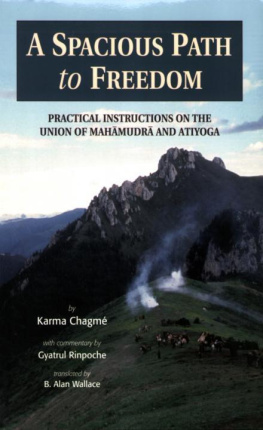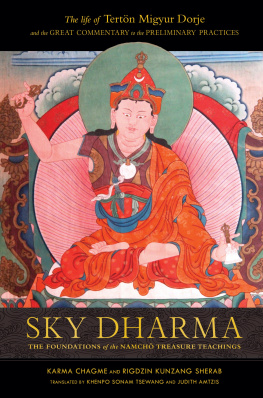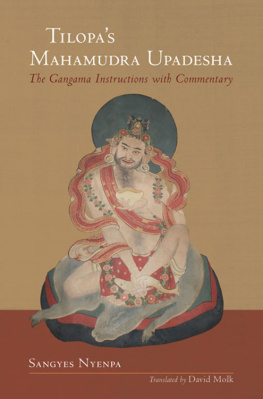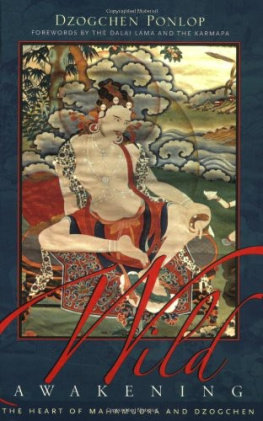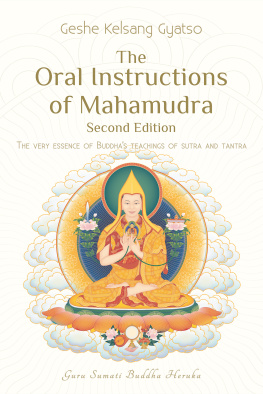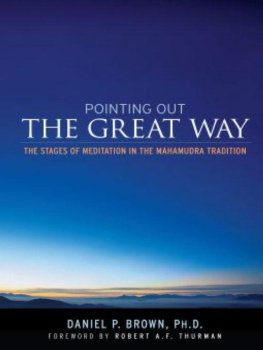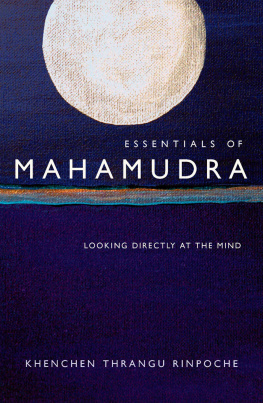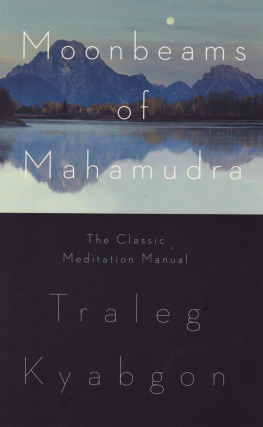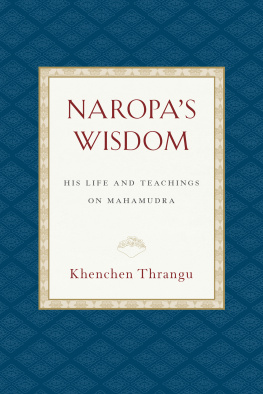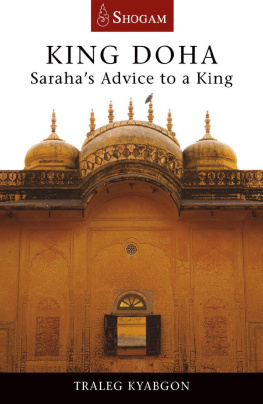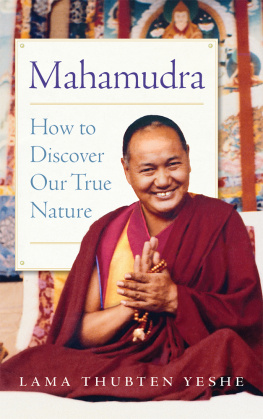B. Alan Wallace

Venerable Gyatrul Rinpoche (Photo: Deborah Borin)
Karma Chagme Rinpoche was born in the Nyomto region of Zalmo Gang in the Do-Kham area of the snowy land of Tibet. In exact accordance with the prophecies given by the illustrious Vajrayana master Guru Padmasambhava, he appeared as a Nirmanakaya in this world in the year 1613. His father was the well-known Mahasiddha Padma Wangdrak, and his mother was an apparent wisdom Dakini known as Chokyong Kyi. Curiously enough, at the very moment he was born, his father gave him the longevity empowerment from the termas of Terton Ratna Lingpa. His father also gave him his first name, Wangdrak Sung. His father was his Lama until he was eleven years of age, during which time the young Wangdrak Sung learned to read and write, perform spiritual ceremonies, memorize texts, and sit in silent meditation for extended periods of time.
The young child was a brilliant learner and went on to master everything that was presented to him. In his eleventh year, he met one of his important karmic Lamas from past lives, the hidden contemplative Prawashara. After receiving many of the important empowerments, transmissions, and pointing-out instructions at the feet of his teacher, he went out to wander in sacred lands and power spots to perform and accomplish the inner practices. In short, he actualized each one of the deities to which he had been initiated and attained authentic signs of realization. After this he received the important transmissions for Avalokitesvara and the lineage of the Mahamudra from Kun-ga Namgyal of Drungpa Tserlung.
At the age of nineteen, Wangdrak Sung resolved to abandon the lifestyle of a householder and journeyed to the seat of the Karmapa, Tsurphu Monastery, to receive the vows of ordination. There he took the vows of refuge, novice ordination, and full ordination. Becoming a fully ordained monk, he then joined the at the Thupten Nyingling Monastery of the Zurmang tradition. Now known by his ordination name, Karma Chagme, he served the monastery with forthright honor and diligence, while simultaneously mastering all the major and minor texts on logic.
In the year of the dragon, the Karmapa and his two spiritual sons came to the Zurmang Monastery. During their stay, Karma Chagme received from the Karmapa many important empowerments, transmissions, and pointing-out instructions, among which were the teachings for the co-emergent Mahamudra. Then Karma Chagme accompanied the Karmapa for the next year and a half, remaining with him in retreat and receiving further instructions. Karma Chagme became famous throughout the land of Tibet, and in his twenty-first year he was given a public examination during the Great Prayer Festival of the Karma Kagyii before a gathering of twelve thousand monks. Following this, his fame increased when he offered two of his fingers as butter lamps. This occurred first at the passing of the Karmapa and later in front of the Jowo Rinpoche image in the central cathedral in Lhasa while receiving the Bodhisattva vows.
After performing many miraculous deeds, Karma Chagme resolved to actualize the form of Avalokitevara known as Gyalwa Gyatso as his principal meditation deity. He entered into a strict thirteen-year retreat, during which he wrote many of his important commentaries. Close to the conclusion of his retreat Karma Chagme recognized and enthroned the young terton Min-gyur Dorje. At the same time, he offered to the treasure-revealer the essential empowerments and transmissions, which awakened the indwelling awareness through which blessings began to well forth as a trove of treasures from his lifetime spent in the company of the great Guru Padmasambhava. Recalling countless past lifetimes, the young terton Min-gyur Dorje began having visions of innumerable deities, which unleashed a storehouse of precious transmissions. Karma Chagme, as the treasure-keeper, was the scribe who recorded them.
After concluding his retreat, Karma Chagme went on to lead many great and important accomplishment ceremonies that blessed the minds of everyone present. In addition, he bestowed the empowerments for the Namcho, or "Space Dharma," revelations of terton Min-gyur Dorje, and the revelations of the great terton king, Ratna Lingpa. He wrote an important commentary, Buddhahood in the Palm of the Hand, that combines these two great treasure lineages, elucidating the subjects of the outer and inner preliminaries, the vital energies, the channels and fluids, mystic heat, blissful emptiness, cutting through to original purity, and crossing over into spontaneous presence. In addition, he wrote the text partially translated here, which combines the practical instructions he had received on Mahamudra and Atiyoga. The founder of the Payiil tradition of the Nyingma order, the Vidyadhara Kunzang Sherap, received all of these important transmissions directly from Karma Chagme. Notably, this particular lineage of practice has become the very heart of the Payiil tradition and has been practiced continuously to the present time.
The Mahasiddha Karma Chagme Rinpoche, who was an authentic emanation of Avalokitesvara in this world of phenomenal existence, passed away in the year 1678 after announcing to thousands of his disciples that the time had come for him to change realms. With astonishing signs he dissolved his mind into the heart of Buddha Amitabha. For seventeen consecutive days extensive after-death ceremonies were performed by scores of Lamas and monks who gathered to honor their precious Lama. Among the many countless signs of marvels that occurred before, during, and after the cremation were many images of Avalokitesvara Gyalwa Gyatso that were found to be embossed on the very bones of this great practitioner.

Terton Min-gyur Dorje was one of the great one hundred and eight treasure-revealer incarnates prophesied by Guru Padmasambhava. In the treasures that came into this world before him, such as those revealed by the treasure-revealer Ratna Lingpa, Dudiil Dorje, and others, there are many references to the coming of Min-gyur Dorje. Born in 1645 in the Ngom To Rola region of the snowy land of Tibet, the young incarnate child made no mistake in choosing his virtuous parents. His father was of the unbroken ancestral heritage of Lord Buddha Sakyamuni, and both mother and father had remarkable dreams of their child before, during, and after conception.

